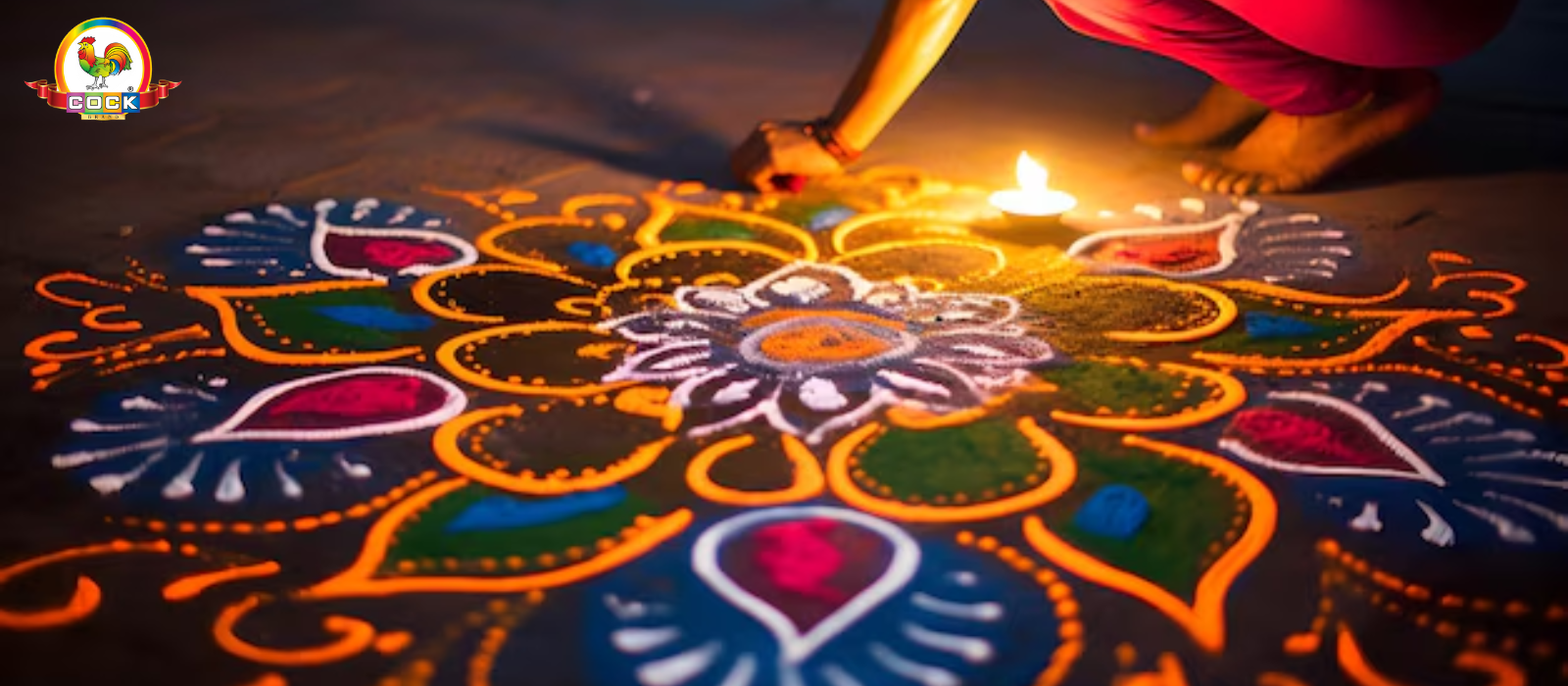


Rangoli has deep cultural significance in Indian traditions. It is believed to bring good luck and prosperity. The patterns can vary widely, from simple geometric designs to elaborate floral motifs. Using traditional Rangoli patterns can connect you with your heritage, making your Diwali celebrations even more meaningful.
To create a beautiful Rangoli, selecting the right materials is essential. Here’s what you need:
Colours: Opt for Organic Colours made from natural sources like turmeric, rice flour, or flower petals. These are safe for the environment and add a unique texture to your designs.
Base Material: While many prefer a plain surface, using coloured sand or even a canvas can make your Rangoli pop.
Tools: Use tools like stencils, brushes, or your fingers to create different patterns and textures.
Before you start creating your Rangoli, it’s important to plan your design. Here are some popular Diwali Rangoli design ideas to consider:
Geometric Designs: Simple shapes like circles, triangles, and squares can be combined to create intricate patterns.
Floral Patterns: Flowers are a significant symbol during Diwali. Consider using lotus, marigold, or any flower that resonates with your theme.
Peacock Motifs: The peacock is a symbol of beauty and grace. Including peacock designs can add an elegant touch to your Rangoli.
Diyas and Candles: Incorporating images of diyas (lamps) can symbolize the victory of light over darkness.
Creating a Rangoli can be both fun and therapeutic. Here’s a simple step-by-step process to help you get started:
Step 1: Prepare Your Surface
Choose a flat and clean area in front of your house or your puja (worship) space.
If you're using coloured sand or powder, spread it evenly to create a base.
Step 2: Sketch Your Design
Use chalk or a light pencil to outline your Rangoli design. This will serve as a guide.
Keep it simple for beginners; you can add more complexity as you gain confidence.
Step 3: Start Filling colours
Begin filling in the colours from the center of your design, moving outward.
Use different colours for different sections to create contrast.
Step 4: Add Final Touches
Once your base colours are filled, add details like dots, lines, or additional patterns to enhance your design.
Consider placing small diyas around the Rangoli to illuminate the colours.
Step 5: Clean Up
After the festival, clean the area gently to avoid disturbing the Rangoli. This respects the art form and maintains cleanliness.
Practice Makes Perfect: Try out a few designs before Diwali to build your skills.
Get Creative: Don’t be afraid to mix different patterns and colours. Creativity is key!
Involve Family: Making Rangoli can be a fun family activity. Invite your family to join in and share ideas.
Mind the Weather: If you’re outdoors, consider the wind and moisture, as they can affect the colours.
Using organic colours not only adds to the beauty of your Rangoli but also makes it environmentally friendly. Here are some tips to ensure your Rangoli is eco-conscious:
Homemade colours: Create colours using kitchen ingredients. For example, red can be made from beetroot, yellow from turmeric, and green from spinach.
Reuse Materials: If you have leftover colours from previous festivals, incorporate them into your new designs instead of discarding them.
Biodegradable Elements: If using flowers or leaves, ensure they are organic and won’t harm the environment after disposal.
Designing Rangoli for Diwali is more than just an art form; it’s a beautiful way to express your creativity and celebrate the spirit of the festival. Whether you choose traditional Rangoli patterns or contemporary designs, the effort you put into creating a welcoming entrance will surely resonate with your guests. This Diwali, make a statement with your Rangoli colour while being mindful of the environment by using Organic colours and sustainable materials.
So gather your family, pick your colours, and let your creativity flow. Happy Diwali
